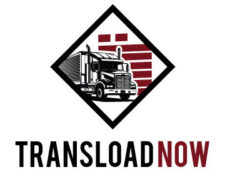The retail landscape transforms dramatically as seasons change, creating unique challenges for warehouse operations. As a supply chain analyst who has studied numerous seasonal businesses, I’ve observed that mastering seasonal warehousing isn’t just about having extra space—it’s about developing a comprehensive strategy that anticipates and adapts to cyclical demands.
Understanding Modern Seasonal Patterns
Today’s seasonal warehousing challenges differ significantly from those of a decade ago. E-commerce has fundamentally altered traditional seasonal peaks, creating “micro-seasons” throughout the year. Beyond the conventional holiday surge, businesses now face multiple demand spikes driven by social media trends, flash sales, and evolving consumer behaviors.
For instance, a major sporting goods retailer I recently analyzed saw their warehouse demand fluctuate not just during traditional sports seasons but also during unexpected events like viral TikTok fitness challenges. This new reality requires a more sophisticated approach to warehousing for seasonal business than ever before.
The Science of Seasonal Forecasting
Effective seasonal planning begins with sophisticated demand forecasting. Modern warehouse operators must move beyond simple year-over-year comparisons. The most successful companies I’ve studied combine multiple data sources:
- Historical sales patterns
- Market trend analysis
- Social media sentiment tracking
- Weather pattern impacts
- Competitor promotional calendars
One beverage distributor revolutionized their seasonal warehousing strategy by incorporating weather pattern analysis into their demand forecasting. This approach led to a 23% improvement in storage space utilization during peak seasons.
Strategic Capacity Planning for Seasonal Demand
The key to successful warehousing for seasonal business lies in “elastic capacity planning.” This approach focuses on creating flexible storage solutions that can expand and contract based on demand without incurring excessive costs.
Modern warehouse operators should establish three capacity thresholds:
- Base capacity for year-round operations
- Flexible capacity for predictable seasonal peaks
- Emergency capacity for unexpected surges
A leading Halloween costume retailer implemented this three-tier approach, reducing their peak season storage costs by 18% while maintaining 99.8% order fulfillment rates.
Technology Integration for Seasonal Success
In my research of successful seasonal operations, technology integration emerges as a critical differentiator. Modern Warehouse Management Systems (WMS) must do more than track inventory—they need to predict and adapt to seasonal shifts.
Cloud-based WMS solutions offer particular advantages for seasonal operations:
- Scalable processing power during peak periods
- Real-time visibility across multiple storage locations
- Automated resource allocation
- Predictive analytics for demand planning
Labor Management Strategies
The human element of seasonal warehousing often presents the biggest challenge. Based on my analysis of successful operations, effective labor management requires a three-pronged approach:
First, maintain a core team of experienced staff who understand your operations deeply. Second, develop relationships with reliable temporary staffing agencies. Third, create a comprehensive but efficient training program that can quickly bring seasonal workers up to speed.
A furniture retailer I studied reduced their seasonal training time by 40% by implementing virtual reality training modules for temporary workers, significantly improving their peak season efficiency.
Cost Control and Optimization
Seasonal operations can quickly become costly without proper financial controls. The most successful companies implement “dynamic cost management”—adjusting resources in real-time based on actual demand rather than predictions alone.
Key areas for cost optimization include:
- Flexible storage space agreements
- Scalable automation solutions
- Just-in-time staffing models
- Variable transportation arrangements
Building Long-term Resilience
The most successful seasonal operations I’ve analyzed share one common trait: they treat each season as a learning opportunity. They meticulously document what works, what doesn’t, and constantly refine their approach.
This continuous improvement process should focus on:
- Updating demand forecasting models
- Refining staff training procedures
- Strengthening supplier relationships
- Enhancing technology systems
Companies that adopt this approach typically see a 15-20% improvement in operational efficiency year over year.
Risk Management and Contingency Planning for Seasonal Demand
Every seasonal operation faces risks, from weather disruptions to supply chain delays. Based on my research, successful companies develop comprehensive contingency plans that address:
- Alternative storage locations
- Backup staffing sources
- Transportation redundancies
- Technology failover systems
Sustainability: More Than Just a Buzzword
Walk into any warehouse today, and you’ll quickly realize sustainability isn’t some corporate checkbox—it’s becoming the heartbeat of modern logistics. I’ve watched companies transform from paying lip service to genuinely reimagining how they approach environmental responsibility.
Take the outdoor gear company I visited last summer. Their warehouse wasn’t just storing equipment; it was a living, breathing testament to green innovation. Solar panels sprawled across the roof, smart lighting systems that breathed with the rhythm of human movement, and a recycling process so efficient it made traditional waste management look prehistoric.
But here’s the real magic: sustainability isn’t just about feeling good. It’s about survival. Companies are discovering that going green isn’t a cost—it’s an investment. Reduced energy consumption means lower bills. Smarter packaging means less waste. Efficient systems mean happier customers and more competitive operations.
The most exciting part? We’re just scratching the surface. Imagine warehouses that aren’t just neutral, but actively regenerative. Spaces that give back more than they consume, where every square foot tells a story of innovation and responsibility.
The Tech Revolution Nobody’s Talking About
Technology in warehousing isn’t about replacing humans—it’s about empowering them. I remember sitting with a logistics manager who showed me how their new AI system wasn’t some cold, calculating machine, but more like a brilliant assistant that could predict seasonal chaos before it even happened.
But here’s the thing most tech evangelists miss: it’s not about the shiniest gadget. It’s about solving real problems. Robots that work alongside human teams, sensors that can detect a potential equipment failure before it happens, systems that breathe and adapt like living organisms.
The future isn’t about technology replacing human intuition. It’s about technology amplifying our most incredible human capabilities—our creativity, our adaptability, our ability to solve problems in ways no algorithm could dream of.
Conclusion
Mastering seasonal warehousing requires a delicate balance of strategic planning, technological integration, and operational flexibility. The most successful companies treat seasonal demands not as a challenge to overcome but as an opportunity to build more resilient and efficient operations.
The future of warehousing for seasonal business will increasingly rely on predictive analytics, flexible automation, and agile operations. Companies that embrace these changes while maintaining focus on fundamental operational excellence will find themselves best positioned for success. Don’t let seasonal demands overwhelm your warehousing operations. Transload Now’s network of warehouses can help you develop a customized seasonal storage strategy that grows with your business. Contact the warehouse(s) in the region of demand today and discover how our flexible solutions can transform your seasonal challenges into competitive advantages.

